Are you troubled by constant neck pain and stiffness? This post on what is torticollis breaks down key symptoms, causes, and steps toward effective treatments. You will learn how to identify signs of torticollis and explore methods to diagnose and manage the condition. The content helps address discomfort and guides you toward appropriate relief, offering clarity on treatment options and long-term care.
Understanding Torticollis and Its Impact
Torticollis refers to a condition that affects neck movement and can present in various forms. This section discusses its definition, unique types, and impact on daily activities such as breastfeeding and exercise. The information will also cover when a sprain is suspected and the role of a physician and physical therapy in treatment.
Defining Torticollis and Its Variants
Torticollis is defined as an abnormal, often painful neck position that limits motion, affecting the joint function and overall posture for the patient. The condition encompasses various forms, making each case unique, and a thorough exam may help rule out complications such as rheumatoid arthritis or other joint issues.
The american academy of pediatrics provides guidelines for diagnosing torticollis, emphasizing early recognition and intervention for proper management. Clinicians use these guidelines to ensure that every patient receives a tailored approach that considers the condition’s variants and potential impact on daily activities.
Identifying Symptoms
Recognizing symptoms is vital in understanding torticollis. Common signs include abnormal neck positioning, stiffness affecting the skull, and disruptions in blood flow. Acute manifestations differ from chronic patterns, with electromyography serving as a key diagnostic tool. Esteemed sources such as mayo clinic provide further guidance, while careful examination may also consider effects related to the uterus.
Recognizing Common Symptoms of Torticollis
Recognition of common signs begins with observing a restricted range of motion in the neck that may include stiffness or unusual positioning of the tissue. Medline research supports early identification to distinguish the condition from similar ailments such as gastroesophageal reflux disease, ensuring proper evaluation by healthcare providers.
Clinicians note that patients often experience pressure and discomfort due to abnormal alignment, impacting daily activities. Practical examinations and diagnostic tests confirm if the condition presents alongside structural concerns, helping establish an effective treatment plan.
Differentiating Between Acute and Chronic Symptoms
The evaluation of acute symptoms in what is torticollis involves a sudden onset of pain, often accompanied by a headache and discomfort near the jaw, which may indicate an underlying injury or infection. A detailed medical history helps clarify these early signs, guiding healthcare providers in distinguishing acute episodes from longer-term issues.
Chronic symptoms tend to show a gradual build-up of discomfort, with persistent muscle tension that might require treatment with a muscle relaxant for relief. Clinical assessments combine patient reports with objective observations to differentiate ongoing pain from transient flare-ups, ensuring an accurate diagnosis based on a comprehensive review of the medical history.
Analyzing Causes
This section reviews congenital origins, such as factors affecting an infant’s health, and examines acquired triggers, including trauma-related hematoma. It outlines how ultrasound aids in diagnosis and when medication may be used to manage symptoms. The discussion provides practical insights into identifying causes and tailoring treatment approaches for better overall well-being.
Exploring Congenital Causes of Torticollis
Congenital torticollis may result from a mutation in the genetic code that affects muscle development, leading to abnormal stiffness in the neck muscles. Clinical observations show that infants with such mutations often exhibit noticeable limitations in movement, prompting early intervention for improved mobility.
Medical experts note that the condition sometimes links to an underlying dystonia, which further complicates the neck’s balance and alignment. Proper nutrition and positioning, such as using a supportive pillow, prove beneficial in managing symptoms and promoting effective treatment strategies.
Investigating Acquired Causes of Torticollis
Acquired causes of torticollis often include direct trauma that injures the sternocleidomastoid muscle, resulting in impaired neck movement and pain near the ear. Health care professionals gather detailed information on recent injuries, noting any damage to nearby bone structures that could complicate the condition.
Investigations by medical experts focus on events such as falls or impacts that affect the neck region, where inflammation and muscle strain are apparent. Accurate information from health care providers ensures that factors like pressure on the ear and changes in the sternocleidomastoid muscle function are integrated into effective treatment decisions.
Approaches to Diagnosis
Practitioners review diagnostic techniques using muscle assessments, stretching tests, and evaluations of the spinal cord and chin alignment. Imaging studies offer additional details on brain activity and structural integrity. This section outlines practical steps that lead to a clear understanding of torticollis diagnosis.
Reviewing Diagnostic Techniques for Torticollis
Specialists use various diagnostic techniques to assess torticollis and wryneck. They conduct muscle assessments at the clinic, utilize imaging tests, and examine regions of inflammation to form an accurate evaluation.
Some diagnostic approaches integrate heat therapy to relieve discomfort and gauge muscle responses during examinations. Research findings support these techniques, providing actionable insights that help professionals develop effective treatment plans.
Understanding the Role of Imaging Studies
Imaging studies offer essential insights into assessing neck motion abnormalities, providing a clear picture for professionals in neurology and medicine. They assist in evaluating the risk of underlying complications, serving as a practical tool for accurate diagnosis and optimal treatment strategies.
These techniques present detailed views of the musculoskeletal structure, contributing to a thorough evaluation by professional clinicians. The advanced imaging methods reduce guesswork, guiding targeted interventions and ensuring effective management of causes related to torticollis.
Exploring Treatment Options
This section reviews non-surgical treatments, surgical options, and physical therapy methods to address torticollis. A thorough physical examination aids in evaluating issues that may affect the arm, stomach, and related areas, especially following an injury. Practical insights offer clear guidance for effective management of the condition.
Evaluating Non-Surgical Treatments for Torticollis
Non-surgical treatments for torticollis often include specialized therapy sessions that focus on muscle relaxation and improved range of motion. Clinical experiences show that parents benefit from practical advice that addresses pain near the sternum and related challenges, while careful monitoring helps avoid complications such as fever.
Therapy methods such as targeted stretching and manual adjustments provide actionable insights for managing muscle tension without surgery. Professional advertising of these approaches highlights their safety and effectiveness, reassuring parents seeking treatments that balance symptom management with daily life requirements.
Considering Surgical Interventions
Surgical interventions emerge as a viable option when conservative treatments fail for managing torticollis, particularly when complications like dysplasia or persistent irritation occur. Medical professionals weigh the risks and benefits, especially when symptoms include edema or issues with the hip, guiding treatment based on detailed diagnostic evaluations.
Surgeons often consider the patient’s overall development, including factors such as tummy time habits, to determine the optimal approach for correction. They rely on precise imaging and thorough assessments to decide on procedures that mitigate discomfort and restore normal function, offering a pathway for improved quality of life.
Investigating Physical Therapy Methods
Specialists implement physical therapy methods that focus on improving neck rotation and reducing nerve inflammation. These techniques include traction exercises that help alleviate discomfort and provide a link to more advanced treatments when needed.
Physical therapy also offers an alternative to orthopedic surgery by targeting muscle tension and enhancing range of motion. Practitioners report that gradual, supervised exercises can decrease reliance on invasive methods and support overall recovery.
Preventative Measures
Strategies aim to reduce torticollis risk during childbirth and early infancy. Topics include measures for supporting proper fetal posture, shoulder alignment, and nervous system stability, with guidance from a health care provider. The following sections offer practical tips and detailed evaluations to help prevent torticollis complications.
Discussing Strategies to Minimize Risk of Torticollis
Medical professionals advise that early detection and management can reduce the risk of torticollis by addressing underlying issues such as muscle spasm and fibrosis through timely intervention. They recommend maintaining optimal neck posture and using gentle heat applications to relieve tension, which may help decrease the likelihood of a toxin-related inflammation that could trigger complications.
Experts also support the use of targeted exercises and regular monitoring to ensure proper muscle balance and mobility, thus minimizing the severity of spasm and fibrosis. Continuous care and practical guidance enable caregivers to identify potential warning signs related to torticollis and act swiftly to prevent further complications.
Long-Term Outlook
Assessing prognosis for torticollis highlights potential challenges like neck stiffness and scar development. The evaluation includes motor skill progress, surgeon roles when intervention is needed, and caregiver support in managing complications. This overview sets the stage for detailed insights on long-term outcomes and management strategies.
Assessing Prognosis for Individuals With Torticollis
For individuals with torticollis, the long-term outlook depends on early diagnosis and consistent treatment. Clinical evaluations often monitor complications related to vision issues including eye strain, and caution is advised when signs suggest complications like retropharyngeal abscess; experts also note that the condition during pregnancy requires careful management to avoid further complications affecting overall health.
Specialists assess prognosis based on initial response to therapy, emphasizing the need for strategic decisions in treatment planning, which may involve plastic surgery in severe cases. Health practitioners also consider factors such as potential risks of sids in infants, ensuring that interventions target both immediate relief and sustainable recovery over time.
Understanding Potential Complications and Management Strategies
Medical experts note that torticollis can lead to added complications involving the throat and clavicle due to misaligned musculoskeletal structures, which may trigger persistent pain or further disease through strained tissues. They stress that early management with regular monitoring and targeted exercises helps reduce the risk of such complications and supports overall recovery.
Specialists warn that ongoing muscle imbalance may interact with adjacent areas such as the throat and clavicle, potentially complicating the disease progression if left unchecked. They advocate for consistent evaluations and personalized treatment plans to prevent chronic discomfort, ensuring that patients achieve sustainable mobility and improved quality of life.
Conclusion
Torticollis affects neck function and plays a significant role in overall quality of life. Understanding its causes and manifestations helps guide early intervention and proper management. Accurate diagnosis ensures that treatment plans target the unique aspects of the condition effectively. The insights provided empower patients and caregivers to remain proactive and informed about managing symptoms and improving daily functioning.



